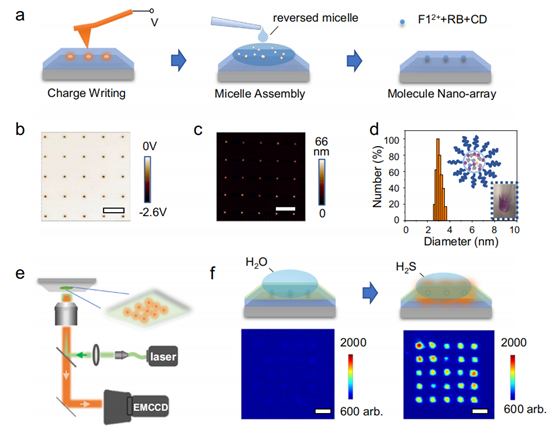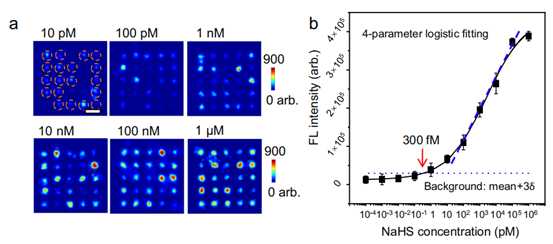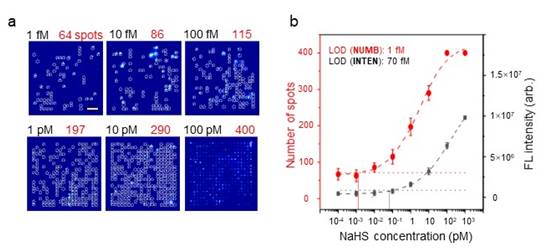Recently, a research paper titled "Femtomolar HydrogenSulfide Detection via HybridSmall-Molecule Nano-Arrays" was published inNature Communications, a top international comprehensive journal, and Xing Xingis the first author of the paper. Professor zhenda lu of nanjing university isthe corresponding author of the paper.

As an important biological signal molecule, hydrogen sulfide(H2S) plays a key role in the cardiovascular and nervous systems. Accuratedetection of H2S is essential for the diagnosis and management of relateddiseases. Currently, H2S detection levels are on the order of micromolar, butbeing able to detect even lower concentrations of H2S will provide an importantwindow for early disease diagnosis and intervention with great potential.However, to push the boundaries of detection further, more innovative methodsare needed.
Microarrays have long been an invaluable tool for fast,high-throughput and ultra-sensitive analysis. The aligned dots on themicroarray provide better accuracy and precision for quantitative analysiscompared to random dots. And nanoarrays, due to their smaller reaction spaceand higher arrangement density, offer the possibility of ultra-sensitivedetection, rapid analysis and small sample sizes. However, due to the inherentproperties of small molecules - they are difficult to manipulate, lack strongbonds to the substrate, and are difficult to detect - precise positioning andintegration of small molecules at the nanoscale remains a huge challenge.
In this study, a self-developed improved nano-electrostaticprinting technology based on high-pressure AFM probes was used to co-assemblefluorescent dyes and quenchers (F12 + molecules) with specific H2S reactivityinto molecular nano-arrays. A molecular nano-array sensor capable of detectingH2S in the order of femtomolar has been developed. The detection limit of 1 fMand a wide range of detection can be achieved with this platform, which hasgood specificity and reliability. This achievement is of great significance notonly in the field of H2S detection, but also in other molecular fluorescentprobe systems, which is of great significance in promoting the ultra-sensitivesignal detection of biological small molecules.

Brief DESCRIPTION OF THE DRAWINGS FIG. 1 is a schematic diagramof high sensitivity detection of H2S by hybrid molecular nano-arrays

Fig. 2 Preparation and characterization of hybrid molecularnano-arrays

Fig. 3 results of detection of a higher concentration of H2Susing the INTEN method

Fig. 4 Detection result of low concentration H2S using NUMBmethod

